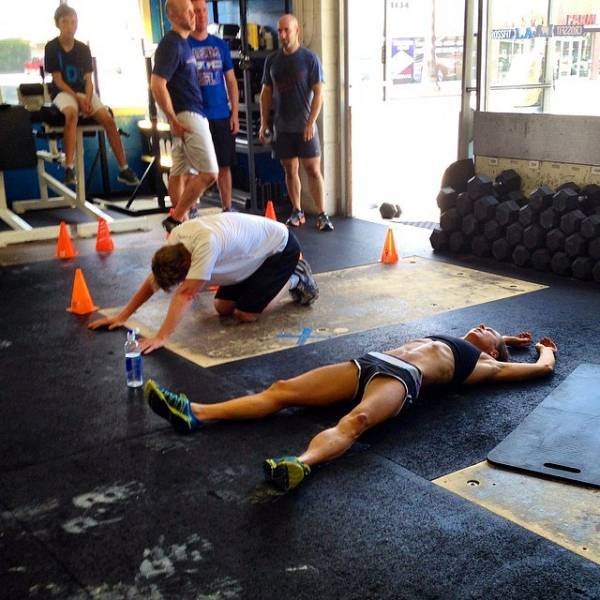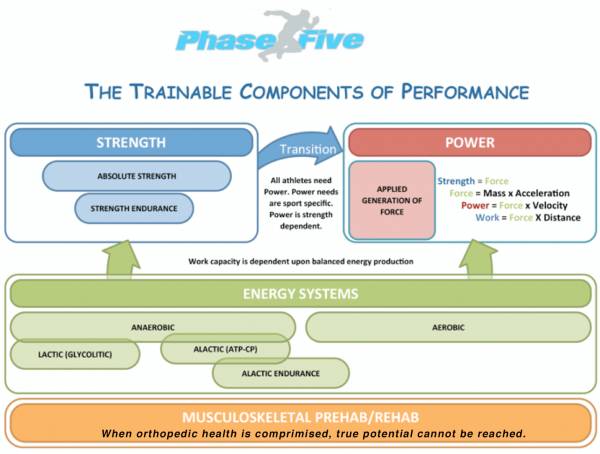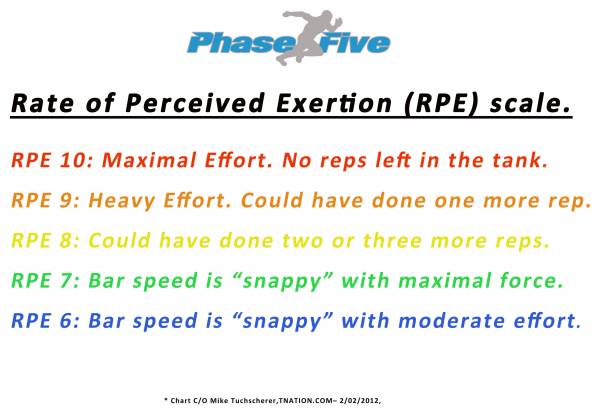Over the past few years CrossFit’s popularity has skyrocketed, and today there are new gyms opening up on every corner. Unfortunately, the fate of the untrained athlete entering these programs is not good, as they are likely to get hurt. This sad reality is largely attributed to the fact that many new gyms, are still embracing the hopper model of programming.
What Is the Hopper Model?
For those unfamiliar with the hopper model, it relates to selecting workouts at random. No program architecture exists, and workouts are scheduled based on the whim of the programmer with a “one size fits all” mentality. This method is a recipe for disaster for the individual who is deconditioned and/or orthopedically compromised. It should be obvious that the hopper model flies in the face of the coach’s creed of “do no harm.”
With this said, I’ve become more dedicated to programming for the middle 80% of our constituency, with the outliers following their own individualized programs. So today I’d like to focus on how we meet the wants and needs of our populace while proactively preventing injuries.
Periodization
Pretty obvious, I know. Yet, the hopper model doesn’t provide any periodized elements; it’s completely random. This is a disservice to your clientele and to yourself as a businessman. Linear progress is the greatest client retention tool in our industry – specifically when it comes to dedicated strength training. After all, quantitative results equal happy clients.
Keep in mind that on the most remedial level, periodization is just a plan. Coaches need to structure training based on a litany of factors and if you’re new to the game, keep it simple. In the mean time, get yourself a copy of Supertraining by Yuri Verkhoshansky, and Starting Strength by Mark Rippetoe.
Risk Mitigation
The easiest way to mitigate risk is by conducting an initial movement evaluation and orthopedic screening. If a client shows gross deficiencies, provide him or her with a prohibited movement matrix and a corrective exercise protocol.
Being a coach means you are accountable for your clients’ safety. The act of prohibiting activities based on objective assessment results is not only reasonable – it is your job. For example, if a client cannot externally rotate his shoulder and achieve a safe rack position, then he is not allowed to front squat or power clean in my gym. It’s that simple. Of course, I want to see my clients progress, so I’ll also provide them with rehabilitation protocols and the ability to retest.
Cybernetic Periodization
If you’re not familiar with the concept, cybernetic periodization (CP) was first introduced by Dr. Yuri Verkoshanksy and it’s simply a flexible plan designed to control volume and intensity on the fly. It’s based on both the athlete’s feedback and the coach’s rating of his technique. This method is invaluable in preventing overuse and overtraining injuries.

The way I incorporate CP into our programming is by using Wendler 5/3/1 for our foundational strength training. We use this for deadlift, back squat, bench press, and shoulder press. The last set of each day’s training is cybernetically periodized. It establishes a minimum rep count (ex. 5+), but also calls for a max effort. This allows for variability in an athlete’s capacity on any given day.
So, if a client is sick, he may complete 5 reps, but if he feels like a world-beater, he might do10 reps. This simple feature helps prevent injury by offering a final max effort set instead of a randomly dictated specific rep count.
Planned Recovery
The hopper model doesn’t offer a proactive plan for recovery. Randomization doesn’t categorize workouts based on factors such as central nervous system (CNS) fatigue, volume, or intensity. It simply links workouts based on subjective training concepts unique to CrossFit such as Hero workouts (“Murph”), Girls workouts (“Diane”), and chippers (“Filthy Fifty”). I’m not saying you can’t program these WODs, but please use some common sense in their distribution and have a plan to match the stimulus with the objective. At the very least, program a mandatory rest day post “Murph.”
One example of how I program is by categorizing strength training based on CNS fatigue. My clients train hip dominant (highest strain) strength and power movements (deadlift, power clean, clean, and snatch) on Monday, assuring an athlete is fresh from a weekend of rest. The CNS load diminishes as the week and training volume progresses. This format helps manage both the classes and the clients, while fostering injury free gains.
Progressions
Our clients are required to show proficiency in the foundational lifts (deadlift, back squat, shoulder press, and bench press) prior to advancing to the transition to power (power clean, front squat, and push press) and power movements (clean, jerk, and snatch).
Progression based training is something the hopper model fails to deliver. Unfortunately, it often assumes an athlete is already relatively strong by dictating weights without caveat. This approach overlooks the fact that power is dependent upon strength. You cannot have one without the other. When I see gyms program 10×2 power snatch and no one in the house can get 135lbs overhead, it makes no sense. A better approach would be to get your athletes strong in the foundational lifts, then make them powerful if their goals are commensurate.

Energy System Training
If I hear “we do energy system training, brah” one more time, I may sumo deadlift high pull my head off. The reality is supercompensation-based energy system training is tough to administer via CrossFit, largely due to its mixed-modal nature. Variations in aspiratory capacity, prior injury, anthropometrics, dysfunction, and bodyweight all make it virtually impossible.
The best way to hone energy systems is through mono-structured events. Don’t be afraid to program rowing, running, or Airdyne training as stand-alone conditioning sessions.
Scaling with RPE
When a workout is not pre-scaled and is simply tossed into the hopper, then the training environment becomes flooded with subjective reps and schemes.
Previously we discussed “Fran.” Let’s take a look at the male RX of 21-15-9 thrusters and pull ups, with a thruster weight of 95lbs. If a new client can only front squat 135lbs and “Fran” comes out of the hopper, he may still give it a shot at RX. What happens next should be obvious – an anaerobically front-loaded power endurance session becomes an aerobic-interval slog. The client will likely break his sets into two to five reps, breathe for thirty to sixty seconds, and continue ad nauseam.
A better way to assure your client receives the prescribed stimulus is to use a rate of perceived exertion (RPE) chart (see below). Although, this method is somewhat subjective in terms of effort, it does use objective measures for weight selection. I’ve also found that it helps clients understand the relationship between absolute strength and CrossFit. Stronger athletes are better athletes regardless of the sport.

Consistent Strength Training
When done correctly, strength training is just too easy. Unfortunately, the hopper model doesn’t do it correctly. Back squatting once a month does not allow for any kinesthetic adaptation to the movement. This is a shame because in reality, most of the gains a new client sees in strength in the first three months are due to improved body awareness and exposure to the lifts.
By repeatedly programming the foundational lifts we supply clients with sufficient stimulus to improve and accurately express their true strength. This is not achieved by randomly injecting a one-rep max every third week of a training cycle.
In summation, there are better ways to program CrossFit than the hopper model. It may take some extra effort, but in the end the clients’ safety necessitates it. As CrossFit has evolved, so have many great coaches and programs, many of which are happy to help those entering into our profession. I encourage the newbies out there to use the scientific method when developing new training plans and hold yourselves accountable to the highest standard of do no harm.
Photo 1 courtesy of Shutterstock.
Photo 2 courtesy of CrossFit LA.






